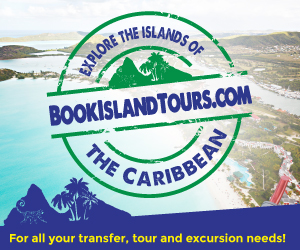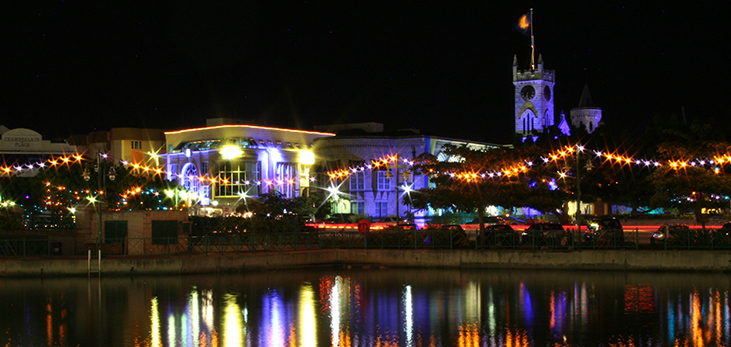|
Barbados' IndependenceBarbados' achievement of independence came on November 30th, 1966 some 300 years as a colony after the first English settlement at Holetown in 1627. This Independence has allowed Barbados to become an independent state within the Commonwealth Nations and it continues to have a major role in regional cooperation.
November 30th 1966, saw Barbados being led into full Independence by the then Premier Errol Walton Barrow of the Democratic Labour Party (previously the Democratic League) who subsequently became the first Prime Minister of Barbados. That first independence ceremony was held at the Garrison and accompanied by the raising of the Barbados National Flag at midnight and the playing of the National Anthem for the first time. Despite Barbados' independent achievement from Britain, the island still maintains ties to the British monarch, represented in Barbados by the Governor General. National Symbols of BarbadosThe National Flag of Barbados consists of three vertical panels, the outer panels of ultramarine and the centre panel of gold with a black broken trident in the middle of the gold stripe. The Barbados Coat of Arms was adopted upon independence in 1966 by decree of Queen Elizabeth. The National Anthem of Barbados was adopted by Barbados when it became independent in 1966. The National Pledge of Barbados was introduced in 1973 and written by Lester Vaughan. The National Flower of Barbados is the red variety with the Yellow Margin on the petals and appears on the Coat of Arms. The National Heroes of Barbados are all celebrated on National Heroes Day with the recognition of ten (10) National Heroes. Independence Day Celebrations in BarbadosNovember 30th is celebrated as Independence Day in Barbados and is recognized as a national holiday on the island. The celebrations associated with this time in Barbados run throughout the month of November and include Community Independence Celebrations, competitions, fairs and religious services. The event is marked by the lighting of the Parliament buildings and office buildings throughout Bridgetown. A spectacular view can be seen at night at various roundabouts on the highways of Barbados as they are lit up creating a picturesque view at night. In Honour of Our War Veterans
Remembrance Day is observed in Barbados and also by the Commonwealth of Nations, with the exception of Mozambique. Such an occasion takes place to pay respect to the many men and women of the military family worldwide who died during those World Wars. The 11/11/1918 Armistice Day is represented by way of the Poppy. |




 Grantley Adams (later Knighted to 'Sir') was the first Premier who led Barbados into the (10) member West Indian Federation in 1958 until 1962. Termination of the Federation came about in 1962 and caused Barbados to return to its former status as a self-government. Grantley Adams made futile efforts to form another Federation with the Leeward and Windward islands.
Grantley Adams (later Knighted to 'Sir') was the first Premier who led Barbados into the (10) member West Indian Federation in 1958 until 1962. Termination of the Federation came about in 1962 and caused Barbados to return to its former status as a self-government. Grantley Adams made futile efforts to form another Federation with the Leeward and Windward islands. As Independence Day approaches in Barbados, many Barbadians take a moment to reflect on the selfless sacrifice that was made by the many men and women who readily risked their lives for the sake of the freedom and comfort we enjoy today. It is estimated that during the Second World War, some two hundred and thirty-six (236) Barbadian and Caribbean civilian volunteers were either killed or reported missing while another two hundred and sixty-five (265) were injured. One such example of a son of the soil is Barbados' own Father of Independence, the late Prime Minister Errol Walton Barrow. At the time, Mr. Barrow was a flying officer and personal navigator to the commander-in-chief of the British Zone of occupied Germany. Throughout the course of World War II, he safely flew forty-five (45) bombing missions over Europe.
As Independence Day approaches in Barbados, many Barbadians take a moment to reflect on the selfless sacrifice that was made by the many men and women who readily risked their lives for the sake of the freedom and comfort we enjoy today. It is estimated that during the Second World War, some two hundred and thirty-six (236) Barbadian and Caribbean civilian volunteers were either killed or reported missing while another two hundred and sixty-five (265) were injured. One such example of a son of the soil is Barbados' own Father of Independence, the late Prime Minister Errol Walton Barrow. At the time, Mr. Barrow was a flying officer and personal navigator to the commander-in-chief of the British Zone of occupied Germany. Throughout the course of World War II, he safely flew forty-five (45) bombing missions over Europe.